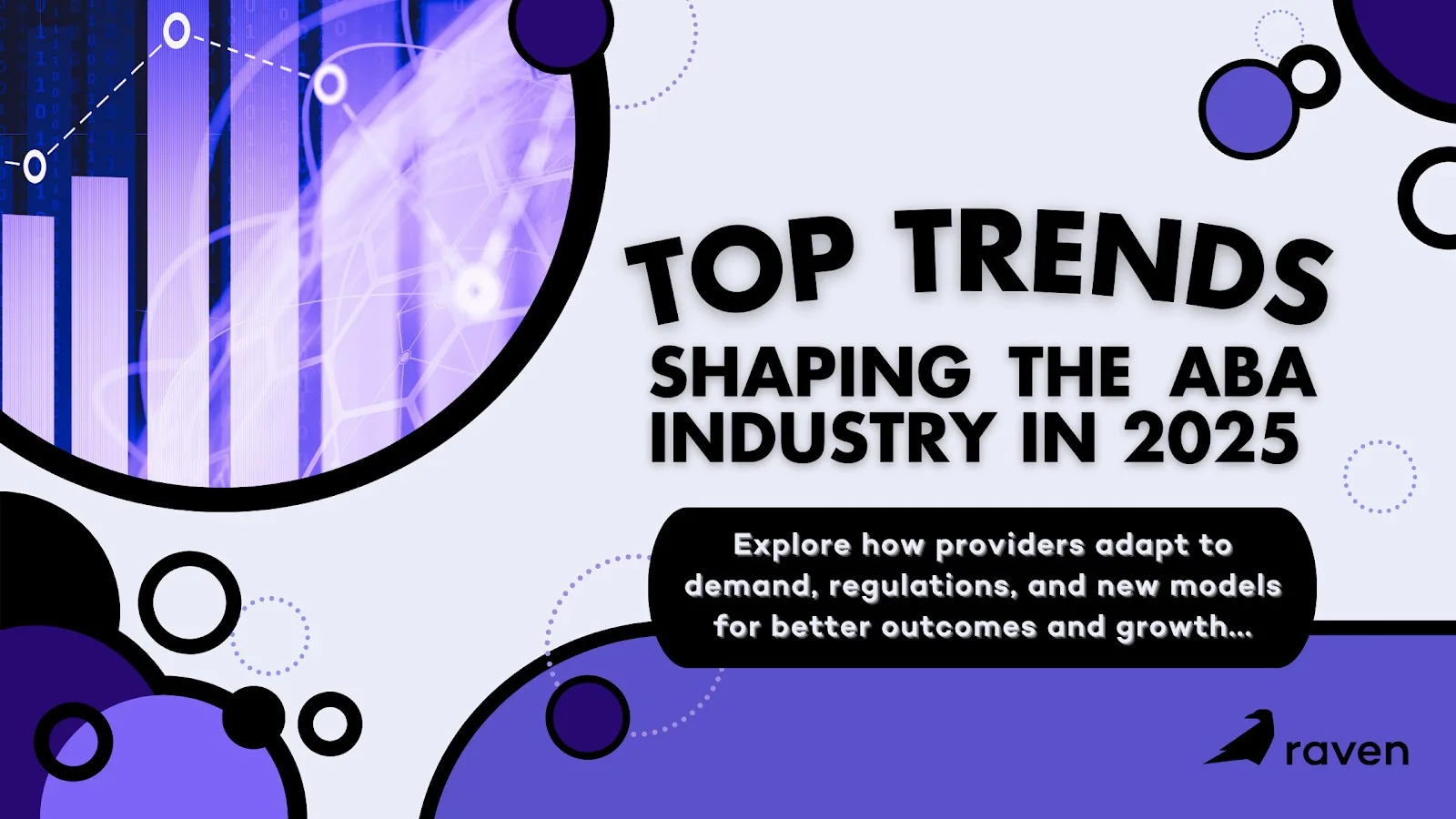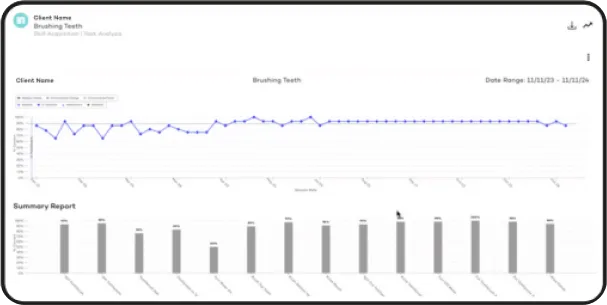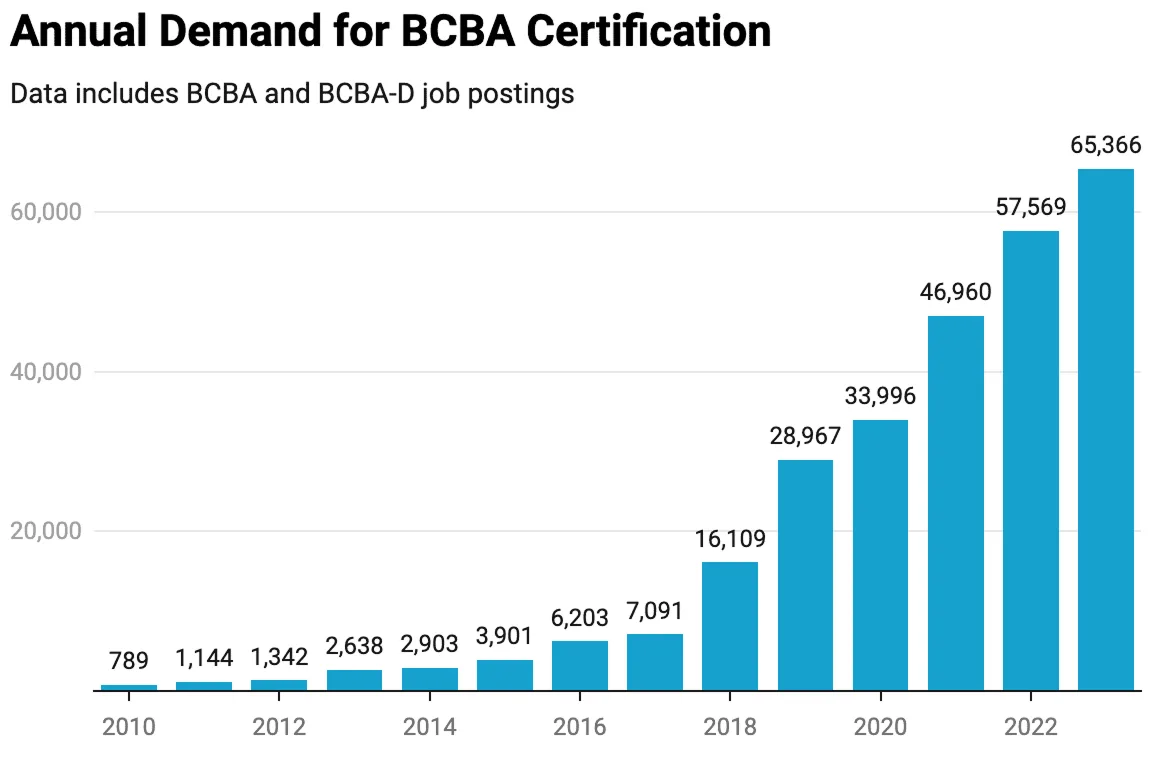
The Applied Behavior Analysis (ABA) industry is experiencing unprecedented growth and transformation. As we enter 2025, new trends are redefining how ABA services are delivered, making it an exciting time for practitioners, clinics, and stakeholders. Understanding these trends is essential for staying competitive and ensuring optimal outcomes for individuals receiving care. With evolving technologies, shifting regulatory landscapes, and increasing demands for behavioral health services, this field is poised for substantial innovation and expansion.
The Expanding World of ABA Therapy
ABA has long been a cornerstone in behavioral health, particularly for individuals diagnosed with Autism Spectrum Disorder (ASD). However, its scope has expanded, and the industry is now integrating into broader behavioral health frameworks. This evolution is being driven by an increased understanding of ABA’s applications beyond autism treatment, making it an essential tool for individuals with various developmental and behavioral challenges.
Expanding Beyond Autism Spectrum Disorder (ASD)
Traditionally, ABA therapy has been widely associated with ASD treatment. While it remains a primary focus, ABA services are now being applied to other developmental disabilities and behavioral health conditions, such as ADHD, anxiety disorders, and speech and language delays. This expansion is increasing the demand for qualified professionals and new service models. According to a recent article from Rise Up 4 Autism, many practices integrate ABA techniques to support speech and language development by reinforcing communication skills, reducing barriers to verbal expression, and promoting alternative communication methods when necessary. These strategies help individuals with speech delays improve their ability to express needs, engage socially, and enhance overall communication effectiveness. As ABA therapy continues to expand, its role in speech and language intervention highlights the versatility of behavioral principles in addressing a wide range of developmental challenges.
The shift has also prompted more research into the effectiveness of ABA across different populations, further solidifying its role in behavioral health.
ABA Market Overview
The ABA therapy market continues to expand, driven by growing ASD prevalence, increased awareness, and enhanced insurance coverage for behavioral health services. Clinics are seeing heightened demand, creating opportunities for new ABA start-ups guidance and practice expansion. With the demand for ABA therapy outpacing the current supply of providers, new solutions are needed to ensure services are accessible to all who need them.
Where the ABA Market is Heading
Market reports indicate that the global ABA therapy market is set to grow at a significant rate. Increased insurance coverage and awareness are key drivers, with more families seeking services. The industry’s ability to scale will depend on technology adoption and workforce development. The growing prevalence of ASD diagnoses, coupled with enhanced governmental funding and insurance policies, is expected to further fuel market expansion.
Additionally, mergers and acquisitions within the sector are increasing as large ABA service providers acquire smaller firms to expand their reach and improve service offerings. Investors are recognizing the industry’s growth potential, leading to more funding opportunities for start-ups looking to innovate within the ABA space.
Key Trends Defining ABA Therapy in 2025
As ABA practices evolve, several key trends are shaping the industry’s future. These trends influence how therapy is administered, how clinics operate, and how patients receive care. Staying ahead of these changes will be vital for ABA professionals looking to provide top-tier services and optimize their operations.
Technology Driving Transformation
Innovative ABA platforms are revolutionizing how services are delivered. Digital tools optimize operations, enhance data collection, and improve client success. Platforms like Raven Health are making it easier for practices to streamline their workflow, ensuring therapists can focus more on their clients rather than administrative burdens. Automation of billing, electronic health records, and real-time data analytics are playing a crucial role in optimizing efficiency.
Telehealth continues to be a major ABA trend, allowing providers to reach patients in remote areas. Digital therapy tools, online parent training programs, and virtual assessments are making ABA more accessible than ever before. As technology continues to evolve, AI-driven analytics and predictive modeling may further refine comprehensive treatment plans and improve patient outcomes.
The Shift to Value-Based Care
Insurance providers and health plans are increasingly transitioning to value-based care models. This shift rewards quality over quantity, emphasizing ABA treatment effectiveness and long-term client progress. Clinics must adapt by demonstrating measurable improvements in patient progress. Providers are now required to show data-driven results, making outcome tracking and compliance with insurance requirements more critical than ever.
The Role of BCBAs and the BACB
Board Certified Behavior Analysts (BCBAs) are essential in this transition. The Behavior Analyst Certification Board (BACB) sets the standards for certification, ensuring that behavior analysts meet rigorous staff training, experience, and ethical guidelines. BCBAs are responsible for assessing client progress, modifying treatment plans, and ensuring that the services provided align with payer requirements that cover ABA therapy. Their expertise in data-driven decision-making makes them invaluable in demonstrating treatment efficacy, securing insurance reimbursement, and optimizing client outcomes. Clinics that invest in BCBA-led initiatives will be better positioned to thrive in a value-based care environment.
Emphasis on Collaboration and Family Involvement
Modern ABA therapy extends beyond direct client interactions. Families are playing a more integral role in treatment, with therapists incorporating individualized treatment plans that encourage family engagement. This approach fosters greater social interactions and long-term success for individuals in therapy. Parent training and involvement have been shown to increase the effectiveness of therapy, creating a more sustainable long-term impact.
Schools, medical professionals, and ABA therapists are also collaborating more closely to provide well-rounded care for patients. This integrated approach ensures that children receive consistent support across different environments, further reinforcing learned behaviors and daily living skills.
Growing Diversity in ABA Service Delivery
The rise of telehealth and remote therapy is increasing accessibility, especially in underserved areas. ABA providers are using hybrid models to reach learners who may not have had access to effective treatment before, further expanding the industry’s reach and impact. Additionally, more efforts are being made to ensure ABA services are culturally responsive, adapting interventions to meet the unique needs of diverse populations.
The demand for ABA therapy is steadily increasing, driving providers to explore new methods of service delivery. With more families seeking treatment, ensuring therapy is delivered alongside traditional behavioral health services fosters a holistic approach, improving long-term patient outcomes and overall well-being. By integrating behavioral analysis with other healthcare services, providers can create comprehensive care plans that support long-term success for individuals undergoing therapy.
With this increased recognition of ABA therapy services as a critical component of behavioral health, many families are seeking early intervention services to maximize their child’s potential. These services are considered the gold standard in treating developmental delays and problem behaviors, offering structured therapy that integrates seamlessly into daily life. By collaborating with other providers (like speech therapists, occupational therapists, educators, etc.), ABA professionals can create more comprehensive treatment plans that support long-term growth across various environments.
As the industry expands, the ability to combine data-driven decision-making with compassionate care will be key to securing market share and ensuring sustainable growth. Behavior analysis has demonstrated effectiveness in addressing problem behaviors and promoting long-term skill development. Practices that emphasize early intervention and individualized care plans will continue to see growth.
The growing demand for ABA professionals has also led to new opportunities and career advancements in workforce development. An article from Behavioral Health Business states that “In 2023, there [was] a total of 65,300 unduplicated job postings for BCBAs. There are a total of 66,300 clinicians with BCBA credentials recognized by the BACB, according to its latest certification data. In one year, there were more job postings for BCBAs than there were BCBA certificants, theoretically allowing all BCBAs to change jobs even assuming that all certificants are active in the field.”
Educational institutions and training programs are also adapting to accommodate this demand, ensuring that the next generation of therapists is well-equipped to meet industry needs.
Addressing Key Challenges in ABA Therapy
While the industry is thriving and widely recognized, several challenges remain that require strategic solutions.
Workforce Shortages and Retention Issues
The demand for ABA professionals is outpacing the supply. With increasing emphasis on quality care, the role of Board Certified Behavior Analysts (BCBAs) is more critical than ever. The BACB has established the certification framework to ensure that practitioners meet professional standards. However, workforce shortages and turnover rates remain a concern, highlighting the need for sustainable career pathways, mentorship, and professional development opportunities. Clinics must invest in creating a supportive work environment that fosters growth and ensures the retention of skilled professionals.
Increasing Regulatory and Compliance Pressures
With the expansion of ABA services comes a more complex regulatory environment. Compliance with acts like the Mental Health Parity and Addiction Equity Act ensures fair insurance coverage, but it also adds operational challenges for clinics. Meeting the requirements of Medicaid and private insurers often involves extensive documentation and reporting, making compliance a top priority for ABA providers.
The Evolving Regulatory Landscape in ABA Therapy
Government policies, such as the Autism CARES Act, continue to influence ABA funding and insurance policies. These regulations dictate reimbursement structures, making it essential for providers to stay informed and adapt accordingly. As policymakers focus on improving access to behavioral therapy services, ABA providers must be prepared to navigate changing legislative requirements and adjust their business strategies accordingly.
The Role of Technology
Technology is not just improving efficiency—it is redefining the entire ABA landscape. Platforms like Raven Health provide advanced tools that automate administrative tasks, enhance applied behavior analysis workflows, and ultimately improve outcomes. By leveraging cutting-edge technology, clinics can ensure compliance, streamline billing, and enhance therapy effectiveness.

Wrapping Up: The Future of the ABA Industry
The ABA industry is at a pivotal moment of rapid expansion and innovation. Embracing ABA trends, leveraging technology, and adapting to new evidence-based practices are key to staying competitive. As providers navigate these changes, partnering with the right tools can make all the difference. Experience the future of ABA with Raven Health— start your free, no-risk 30-day trial today!



